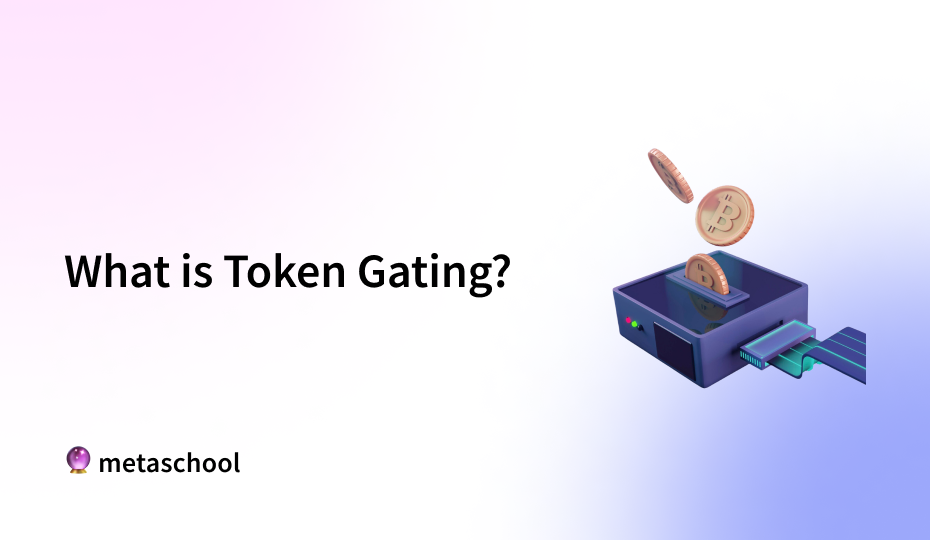Table of Contents
The concept of token gating is relatively new: it basically means that access to some content or service is restricted to individuals who hold a special type of digital token. These tokens, which are built on a specific blockchain like Ethereum, basically serve as proof of ownership or membership, which enables any creators, brands, and communities to offer unique value to their most loyal supporters.

What is Token Gating?
Token gating is a mechanism that uses digital assets available on the blockchain—tokens—to control access to digital or physical resources. These tokens can be non-fungible tokens (NFTs), fungible tokens, or even soulbound tokens (non-transferable tokens tied to an individual). Token gating creates a sense of exclusivity by requiring users to hold a specific token to gain special access and also increase the value of the digital asset within the community. It essentially uses the decentralized nature of blockchain technology to ensure that access is granted only to those who meet the criteria, without the need for intermediaries.
Imagine, there is a musician who wants to do something to show appreciation for his loyal fans. So he releases an album that is exclusively for fans who own a special NFT released by the singer in the days that he was just starting out. As a result, only early supporters will have direct access to this album, reinforcing a sense of exclusivity.
Let’s look at the benefits of token gating and the challenges that arise due to its use.
| Pros of Token Gating | Cons of Token Gating |
|---|---|
| Exclusivity and Scarcity: Restricting access to token holders creates a sense of exclusivity and value around offerings. | Adoption Barriers: Not all users are familiar with blockchain technology or digital wallets, limiting accessibility. |
| Monetization Opportunities: Enables new revenue streams, such as selling NFTs or charging for access to gated content. | Environmental Concerns: Some blockchain networks (e.g., proof-of-work) have high energy consumption, raising sustainability issues. |
| Enhanced Engagement: Fosters deeper connections between creators and audiences by rewarding loyalty and participation. | Regulatory Uncertainty: The legal and regulatory landscape for blockchain-based tokens is still evolving, creating uncertainty. |
| Transparency and Security: Blockchain ensures fair and secure access without the risk of fraud or manipulation. | Technical Complexity: Implementing token gating requires expertise in blockchain development and smart contracts. |
| Community Building: Helps creators and brands build strong, engaged communities by offering unique benefits to token holders. |
How Does Token Gating Work?
Token gating operates through smart contracts that help verify the ownership of a specific digital token in a person’s crypto wallet. After the ownership claim is verified, the user is allowed access to the exclusive content.
Smart contracts were created to facilitate the execution of digital agreements between two or more parties without the need for a third-party intermediary. They allow for the automation of processes, reducing costs and increasing efficiency. They also provide a secure and transparent way to execute agreements, ensuring that all parties involved are aware of their obligations.
To learn more about smart contracts, check out this guide.
- Token Creation: A creator or organization mints a token and distributes it to its audience. This token represents ownership, membership, or access rights.
- Access Control: The creator sets up a smart contract that defines the rules for access. For instance, the contract might specify that only wallets holding a specific token can access a particular resource.
- Verification: When a user attempts to access the gated content or service, the system checks their wallet to verify if they hold the required token. This process is automated and happens in real-time.
- Access Granted or Denied: If the user holds the required token, they are granted access. If not, they are denied.
Use Cases of Token Gating
Token gating has a wide range of applications across industries. Let’s discuss some ways that help add value to the digital tokens with this method.
Exclusive Content and Experiences
Creators, such as musicians, artists, and writers, can use token gating to offer exclusive content to their most dedicated fans. For example, a musician might release a limited-edition song or behind-the-scenes footage only to NFT holders. Or an artist could offer early access to new artwork or private virtual gallery tours. The sense of exclusivity and scarcity is a big factor in drawing people’s attention. Ledger Quest offers token-gated educational quests, rewarding participants with custom Ledger devices.
Membership and Community Access
Token gating is a powerful tool for building and managing online communities. For instance, a DAO (Decentralized Autonomous Organization) might restrict voting rights to members who hold a governance token. Or a brand could create a token-gated Discord server or forum for loyal customers. A social club called Friends With Benefits uses a similar concept. It requires users to hold a minimum of 75 $FWB tokens to join their exclusive Discord server.
Event Access and Ticketing
Token gating can revolutionize the ticketing industry by reducing fraud and creating unique experiences. For example, issuing NFTs as event tickets, which can also serve as collectibles or provide access to future events, or offering VIP perks, such as backstage passes or meet-and-greets, to token holders. The Deadfellaz NFT collection hosted a token-gated party at NFT NYC, accessible only to Deadfellaz NFT holders.
E-Commerce and Retail
Brands can use token gating to reward loyal customers and drive sales. For example, offering discounts or exclusive products to customers who hold a specific token, or creating a token-gated loyalty program where users earn rewards for their purchases.
Education and Certification
Token gating can be used to verify credentials and provide access to educational resources. For instance, issuing soulbound tokens as certificates of completion for online courses, or restricting access to advanced course materials to students who hold a specific token.
Related Reading:
